Wards of Evanston
August 31, 2018
The city of Evanston is divided into nine wards, with an alderman elected into each. Aldermen and residents of a certain ward, in theory, work together to better their community with implementations of community programs and events. However, a long history of housing segregation has created racial and economic divides within Evanston that is still visible to this day. In turn, certain wards experience more opportunities and resources than others.
1st Ward
Though Evanston’s first ward isn’t well-known for its diversity, it’s characterized by its lively downtown area and connections with Northwestern University.
Northwestern wrote about the first ward in their neighborhood news this summer, noting the “historic residential neighborhoods, the beautiful lakefront, and a lively downtown featuring the former Varsity Theater building.” They also recognized Fountain Square that was just renovated, and the first ward’s abundance of unique retail stores.
Downtown Evanston, while also in the fourth ward, is largely based in the first. According to The Daily Northwestern, the area holds over 3,000 businesses that accumulate more than one billion dollars of annual revenue. Stores there are often one of a kind, like Market Fresh Books and Coucou & Olive.
The first ward has a combination of single-family homes near the lakefront and in downtown Evanston. A large stretch of the first ward encompasses housing for Northwestern students and portions of Northwestern.
With a diverse population in age, the ward includes housing for families and senior citizens as well. Evanston plans on creating more affordable housing, aimed mostly for low-income senior citizens. This includes the new Perlman building located in the first ward near downtown Evanston. Its waiting list is currently closed.
Based on the city of Evanston racial demographic map off of a 2010 census, it is apparent that the first ward holds many more Asian residents compared to the other wards in Evanston. The rest of the first ward appears to be primarily white with few African American or black areas and a low Latinx population.
By Sydney Ter Molen
Staff Writer
2nd Ward
ETHS has remained a staple in the growing second ward.
Superintendent Eric Witherspoon told The Daily Northwestern in 2016, “The high school is part of the neighborhood. We have a long-time, generational relationship with the second ward and the community around us.”
The 2010 U.S. Census reported that the second ward has 8,133 residents. A racial and ethnic distribution map from the same census shows a wide range of races and ethnicities in the ward that are not integrated.
There is a land split in the middle of the map showing the west side of the ward having a larger black population and the south side having a larger white population without much crossover.
The increasingly popular WestEnd shopping and business district is a big lure for new residents. Sherry Locke, an ETHS parent and second ward homeowner, has nothing but praise for the WestEnd. “The Starbucks and Valli Produce are a great thing,” she says.
In 2017, a 16-unit affordable housing building was designed and set to be at 2215 Dempster St. within second ward. City Council rejected the funding proposal and many citizens agreed. The Daily Northwestern City Editor David Fishman reported that “members of the group said they recognize the need for affordable housing in the city, but that this particular project would destroy the neighborhood.”
By Lauren Dain
Staff Writer
3rd Ward
The third ward has a long history of political activism. According to The Daily Northwestern in 2016, Madeline Fox reported that third ward residents of 1970 “declared independence from the United States for two hours as a protest against the Vietnam War.”
However, Fox explains that even before that, residents of the third and first ward joined forces to create the Southeast Evanston Association. The group is still active and to this day addresses issues such as “zoning, land use and historical and environmental preservation.”
The community has seen an increase in small businesses within the ward. While small businesses have maintained a progressive economic development, many residents fear that they will further gentrify the ward.
“When prices rise, it attracts wealthier people,” third ward resident senior Jamaal Perrin says. “People are forced to work more or move to accommodate the expenses.”
The third ward, similarly to the city as a whole, has been plagued by rising property costs and taxes. The more businesses that have moved into the third ward, in turn, creates larger living expenses.
Residents who feel pushed out of the ward due to the overcrowding and living cost increase, call upon alderman of the third ward, Melissa A Wynne. Although the ward is unique in location, the third ward meers racial demographics of most other wards as it displays a primarily white population.
By Caroline Jacobs and Nora Miller
Assistant In-Depth Editor and Staff Writer
4th Ward
In Evanston, citizens aren’t always happy about the way things are run.
Fourth ward alderman Donald Wilson says that “sometimes some city meetings get aggressive.”
Evanston’s fourth ward is meant to be a welcoming environment.
“I really feel like I am lucky because people are very thoughtful and communicate respectfully,” Wilson added. “People come, they ask questions and it’s always a respectful conversation and dialogue.
The fourth ward is tucked between the more wealthy lakefront neighborhoods and the more middle-class neighborhoods due west.
“Some people might consider it kind of a transitional area between different parts of the city. It’s more centrally located,” says Wilson.
Its central location makes it welcoming to the broader area, helped by their community centers such as the YMCA and Robert Crown bringing people in. Currently, there’s a new Crown center being built, and the old one will continue to continue to run during construction. It’s set to open in the fall of 2019.
“There are a lot of churches, a lot of faith-based organizations, quite a few non-profits and things like the YMCA. It’s a really important community partner and community resource,” says Wilson.
The fourth ward consists of three District 65 schools: Dewey, Washington and Nichols. Students attending these schools live in varying wards, with different social and economic backgrounds. The school lines for Dewey include houses from the second, third, fourth, fifth and seventh wards.
“We also tend to have housing that is not as expensive as in some other parts of the city. I think that helps people that have more socio-economic challenges,” Wilson added.
By Sydney Ter Molen
Staff Writer
5th Ward
While the fifth ward has historically faced challenges concerning distribution of resources in the City of Evanston, residents of the ward maintain a sense of community.
The fifth ward is located just north of the high school. The Fleetwood-Jordan Community Center, Family Focus as well as King Arts, a K-8 magnet school and was formerly the all-black Foster school.
A majority of the population within fifth ward identify as people of color. White residents amount to 38.8 percent. In addition, 41.5 percent of the population identifies as black, according to the 2010 U.S. Census data, the most recent census.
Redlining, which predominantly occurred during the 1960s in Evanston, pushed residents of color into the fifth ward. By 1960, according to a 2015 Chicago Magazine article, 12 percent of Evanston residents identified as black. West of Greenbay Rd, in the fifth ward, however, 94 percent of residents identified as black.
The experiences with redlining in Evanston did not end with the passage of the Fair Housing Act. In the 1960s, the City of Evanston put into action a plan to desegregate the schools. At the time, the majority of black students attended Foster [99 percent] and Dewey [66 percent]; in addition, Haven, Miller and Washington were primarily white [95 percent] as were the nine other middle schools [99-100 percent], as reported by Evanston Roundtable.
In an attempt to integrate the schools, the City of Evanston shutdown Foster — turning it into King Arts — and the black students who attended, along with the majority of black students who attended Dewey, were bused to other schools.
Since the decision, there has been a push from the fifth ward to return neighborhood schools citing the negative impacts that busing has on students.
“I am an advocate for neighborhood schools. That said my responsibilities are to make recommendations that are feasible and affordable,” District 65 Superintendent Paul Goren says. “Without additional resources from a referendum or from shifting resources from existing schools, we are constrained in developing new schools in the fifth ward or anywhere in Evanston.”
District 65 has proposed two different concepts to get a public school into the fifth ward in the last 20 years. The first was in 2002. District 65 raised the idea of placing a school into the Family Focus building. However, about a year later, the board stopped the project citing a multi-million dollar deficit as reported by The Daily Northwestern in June of 2018.
Ten years later, in 2012, the possibility of building a school in the fifth ward was put into a city-wide referendum. The estimated cost of the project would have been $20.6 million in bonds and an additional cost of over $25 million to fund improvements to existing schools. The referendum was defeated 54.7 percent to 45.3 percent, despite 67.33 percent of the fifth ward voting in favor, according to the Cook County Clerk’s Office 2012 report.
“There are many reasons the Evanston community can’t seem to agree on a school in the fifth ward. There are those who feel strongly that it will create segregated schools again. Those who don’t care enough about the children of the fifth ward, to support raising their taxes to build another school. Those who felt the last referendum ignored the voices of the residents and would take away Foster Field.
And then there were those who were apathetic and didn’t come out to vote,” Center Director for Family Focus, Colette Allen says in an interview with the Evanstonian. In recent years, residents have noticed a decline in available resources in the ward. “When I was growing up, there were more health and food options, doctor’s offices, Community Hospital and the Y[MCA],” Allen states. “The Y, hospital and doctors’ offices are gone and food options seem to come and go.”
Despite the perceptions of shortcomings, many within the ward keep the mentality that the neighborhood should not be looked at in merely a negative way. Residents have felt the sense of community present within the fifth ward for generations.
“I grew up and spent many years in the fifth ward and work in the fifth ward. What I have always valued is the sense of community,” Allen says. “Growing up you knew everyone on the block and everyone took care of one another. It has changed but it is still home and I always feel connected and comfortable.”
By Trinity Collins
Features Edtior
6th Ward
The sixth ward is a community with minimal ethnic and racial diversity.
According to a 2017 article by The Daily Northwestern, Assistant City Editor Kristina Karisch reported that “In the last U.S. Census, Tendam said the sixth Ward counted about 10 percent of its residents as people of color, compared to around 40 percent for Evanston as a whole.”
The ward also has Evanston’s highest population, constituting about 12 percent of the town, according to a 2012 Chicago Tribune article.
“There are some people of color but primarily white,” says sixth ward resident and ETHS senior Jack McConkey, “I wish the the population was more diverse so we can experience more cultures in the area.”
Sixth ward citizens are focused on their community.
“Tons of my friends have parents that volunteer at school events and do other things in Evanston,” freshman Daryn Kaplan says. “I think a lot of kids are active in our community especially when it comes to programs in school.”
Kaplan’s parents began the Facebook group “Evanston 6th Ward Neighbors” for residents to share updates about the community or voice their opinions on issues such as diversity.
By Lauren Dain
Staff Writer
7th Ward
Located in Northwest Evanston, the seventh ward is one of the wealthiest in the city, with its lakefront property and a shared border with Wilmette.
“I can’t speak for all of the seventh ward but the area I live in has such a noticeable disparity, both racially and economically, compared to the entirety of Evanston,” junior Lily Ng says.
In addition to a lack of socioeconomic diversity, th iere is little racial diversity with most of seventh ward residents being white.
“In my entire condo building, there is not a single person of color,” junior Echo Allen says.
Much of the Northwestern University campus is located in the seventh ward. The relationship between the city and Northwestern has been complicated over the years. Northwestern has placed highly on The Princeton Review’s “town/gown relations are strained” list for the past few years.
On the contrary, some ETHS students like living by Northwestern.
“It’s cool to be by a really big college and it changes the feeling of the town. I go to the beach and the rocks a lot,” junior Eve Rubovits says.
In addition to Northwestern, the seventh ward is home to Northshore Hospital, a complex transportation system, and Central St., a prominent business district.
By Caroline Jacobs and Nora Miller
Assistant In-Depth Editor and Staff Writer
8th Ward
At the southernmost part of Evanston sits the eighth ward with its diverse residents of all different races and socioeconomic statuses.
Students in the eighth ward attending public school go to either Oakton or Dawes Elementary School before attending Chute Middle school. While most Evanston elementary and middle schools serve primarily white students, with minority students being bused to increase diversity, that is not the case at these schools, according to The Evanston Round Table.
According to the 2016 – 2017 Illinois Report Card, students of color make-up 74.5 percent of Oakton and 75.1 percent of students at Dawes. That number is much lower at other most other Evanston public elementary schools.
Senior Abby Molotla believes this diversity provided an enriching academic experience.
“My time at Dawes and Chute helped me realize that different races, ethnicities, and cultures are everywhere and should be appreciated equally,” Molotla says.
Ann Rainey has served as the alderwoman in the eighth ward for 31 years. She told The Daily Northwestern in 2017 that one of her biggest initiatives has been working to transform the city-wide perception of the eighth ward in relation to crime.
Many in Evanston view the eighth ward as an area plagued with crime. Rainey attributed this reputation to the eighth ward’s shared border with Chicago in her interview with The Daily Northwestern.
In May 2018, during a ward meeting in response to the shootings of two men on Custer Ave., deputy police chief Aretha Barnes stated that there has been an increase in violent crime in the eighth ward.
On the contrary, both Molotla and junior Jonah Doppelt, who have lived in the eighth ward for 17 and 10 years, respectively, say they have never felt unsafe in their neighborhood.
“It’s a community that really cares for each other and looks out for each other,” Molotla says.
By Caroline Jacobs
Assistant In-Depth Editor
9th Ward
Evanston’s ninth ward is one of the most residential wards in the city. Two of the more identifiable landmarks is Dawes Elementary School and Chute Middle School on its southern boundary. Dawes Elementary school belongs to the eighth ward, but many ninth ward students attend Dawes.
Other than the Home Depot plaza and a few gas stations, there is little commercial activity in the ward.
However, there is an abundance of single-family housing. Among Dawes, Oakton and Chute, there is a low income population of 58%. This is fairly high compared to the district-wide 43% low income population.
“We’re neither the poorest nor the richest ward in Evanston,” Julie Kaufman says, who has lived in the ninth ward for 24 years. “Some think that Evanston is the ritzy suburb just north of Chicago, but the ninth ward would not fit this characterization.”
There is a lack of opportunity for children in the ninth ward to partake in outdoor activities. Some residents have concerns over Ridgeville park and the public benches.
“I think Ridgeville could be used in a better way by providing more places for kids to play in, more community-based,” senior and ninth ward resident Julia Shoaf says.
Ridgeville Park District is working to ease these concerns as they implement various programs for children. Some of these programs includes summer camps, a farmer’s market and concerts.
“The city needs to provide more opportunities for families by expanding access to scholarships and financial aid for student programs,” Shoaf adds.
Currently, the alderman of the ninth ward is Cicely Fleming. According to the City of Evanston, “Fleming is a dedicated community advocate and a founding member of OPAL.”
OPAL (The Organization for Positive Action and Leadership) is a group “committed to promoting equity in government.”
By Ben Baker-Katz
In-Depth Editor


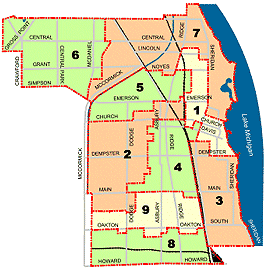

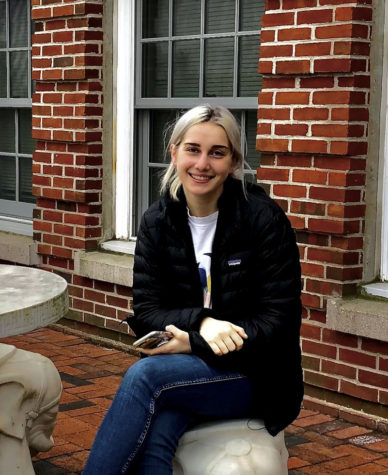

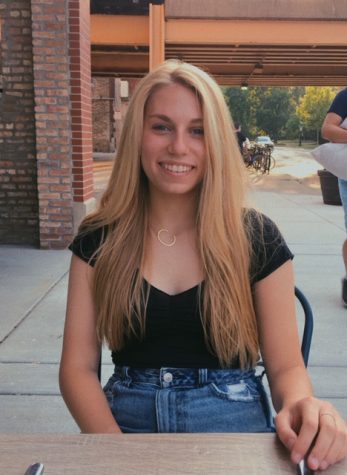

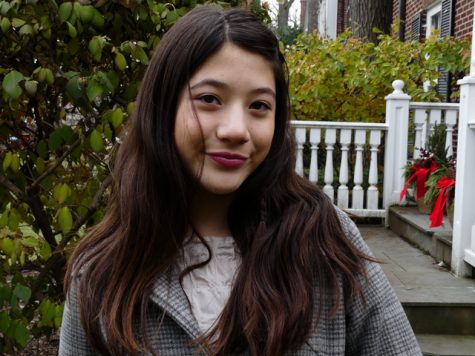









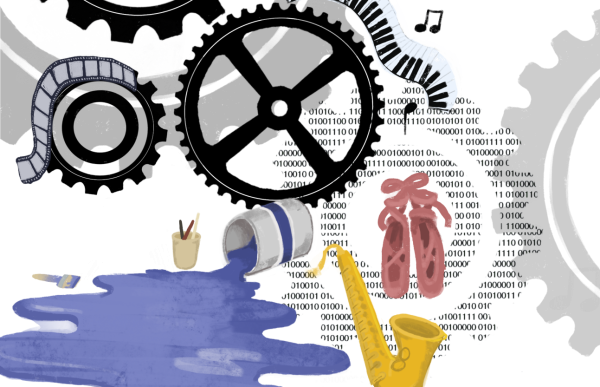
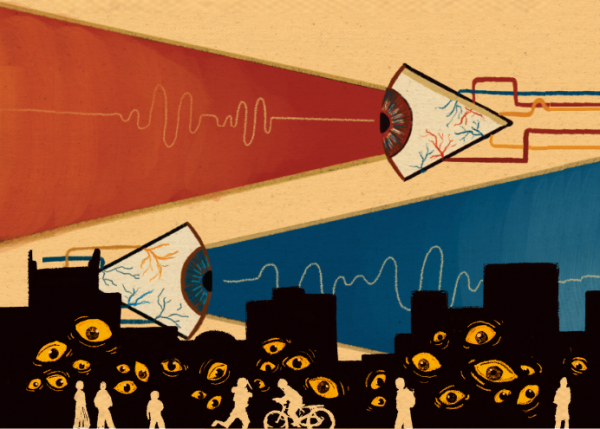
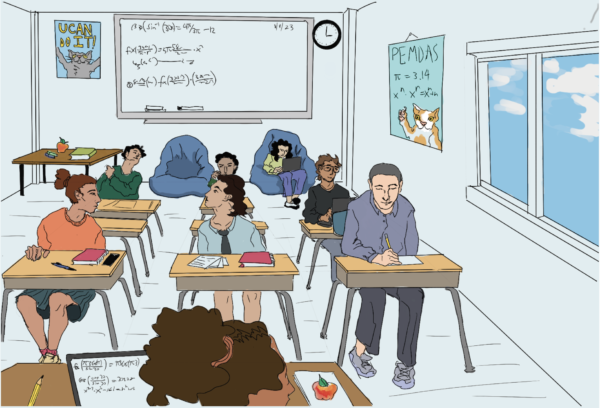

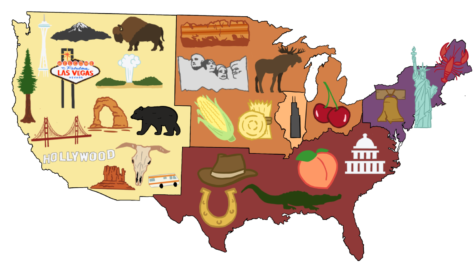

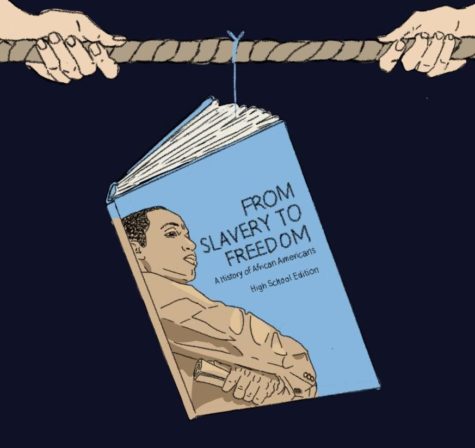
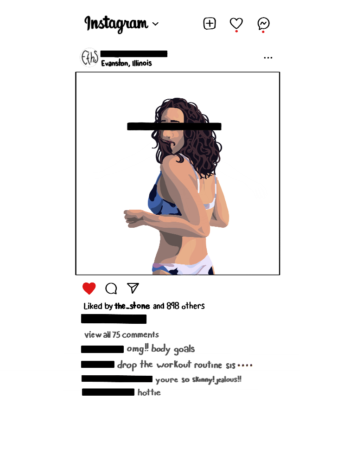
SeeDub • Aug 25, 2023 at 7:42 am
Born and raised throughout the 80’s/90’s, the 3rd ward had a vast population of African Americans. Many homes were owned by Blacks (Sherman and Main area) and the vibrance within the community reflected this sentiment. Gentrification is a new thing and if history is not preserved, it will be erased.
John B. McHugh • Jul 23, 2023 at 4:26 pm
Matches my memories of growing up in Evanston years ago at 921 Elmwood Ave. Of course, lots has changed. Nice job.
Basit Syed • Mar 24, 2021 at 12:48 pm
Need to fix postal service system. I pay my tax why can ward fix the problem. I am new resident of 1924 Jackson Ave. I am very hard working good citizen, please fix the postal service system. The mail man put improper place or misplace my important mails and city is one hundred percent reliable.